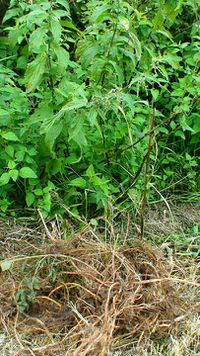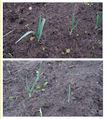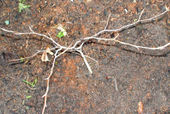Soil management
From eagle-rock.org
This page is to prepare and collect information for one or more chapters in the course. --John Eagles 01:13, 23 December 2011 (PST)
Chunks of information
- The use of the stinging nettle for soil improvement: The photo shows the larger species of the stinging nettle (Urtica dioica) with roots that were dug out. This plant can have good use for improving the soil. The long roots bring many minerals from lower down to the upper soil. The plant can grow up to 2 meters high and produces a lot of material for mulch or compost, so it is an excellent green fertilizer.
The roots also make the soil very loose and crumbly.
- The following is a quote from http://en.wikipedia.org/wiki/Stinging_nettle:
"The growth of stinging nettle is an indicator that an area has high fertility (especially phosphorus) and has been disturbed.
- Nettles contain a lot of nitrogen and so are used as a compost activator or can be used to make a liquid fertiliser which although somewhat low in phosphate is useful in supplying magnesium, sulphur and iron. They are also one of the few plants that can tolerate, and flourish in, soils rich in poultry droppings."
- You can use the nettles for most excellent fertilizer. Put the plants in a ton of water and let it stand for a few weeks. This fertilizer is rich of nitrogen and also of minerals such as magnesium, sulphur and iron. This fertilizer can be applied by pouring it next to vegetables or flowers. It is taken in by the plants very fast.
Gallery
Soils want to be covered in some way. In nature, either mulch in the form of fallen leaves and branches cover a soil, or all kinds of plants grow there. In a garden, [1] grow where you don't remove them. These weeds can rival with your crops, but in times that no vegetables are growing there, weeds have a useful function.




